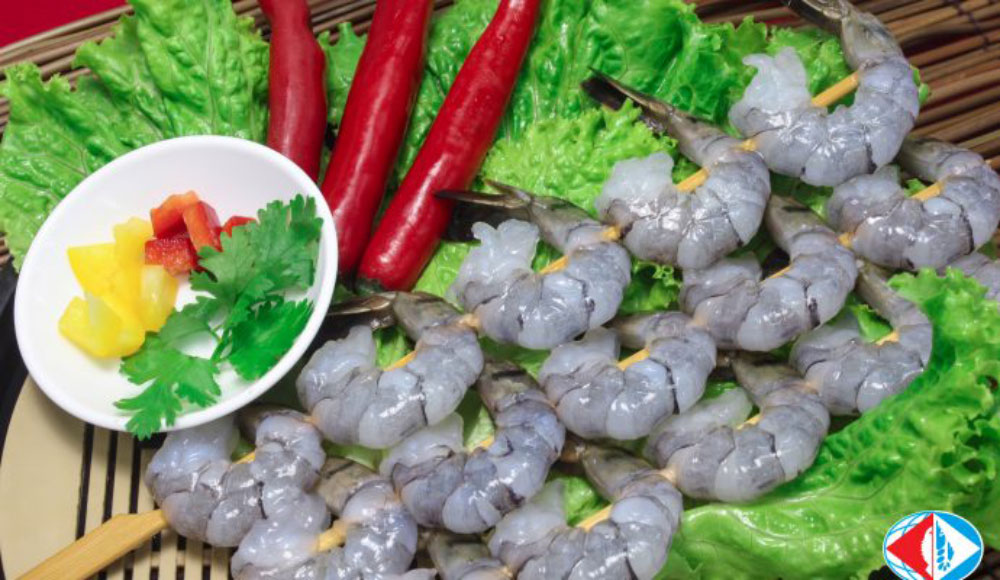Vietnam Seafood
Shrimp exports in the first 5 months of the year: Enterprises are worried about US tariffs
Impressive growth in many markets
According to statistics from Vietnam Customs, many major markets recorded impressive shrimp export growth in the first 5 months of this year.
China & Hong Kong: reached 494 million USD, up 90% – becomes the leading market in value.
The United States: reached 294 million USD, up 28.6% despite facing the risk of tariffs.
CPTPP: increased by 37% (472 million USD), in which Japan, Canada, and the UK continued to be bright spots.
EU: increased by 22% with prominent markets such as Germany (+28%), Belgium (+41%).
Korea: reached nearly 140 million USD, up 13%.
Raw shrimp prices and export prices both tended to increase, good consumption demand in major markets such as China, Japan, Korea, the EU as well as businesses boosting exports to the US before July 9 reciprocal tariff deadline of President Trump, the effect of FTAs such as CPTPP, RCEP has contributed significantly to this growth.
Risk of reciprocal tariff of up to 46%
The US plans to impose reciprocal tariff of up to 46% on imported goods from Vietnam. This is the highest level among countries exporting seafood to the US, far exceeding the tariff rate with Ecuador (10%), India (26%), Thailand (36%).
If this tariff is imposed, it will cause a sharp decline in export turnover to the US – a market that accounts for more than 18% of the total value of seafood exports.
Seriously affect the livelihoods of 4 million workers in the shrimp and pangasius supply chain.
Put competitive pressure on other markets due to export diversion, reducing selling prices and profits of the entire sector. And increase the risk of bankruptcy for small businesses due to inventory, cold storage costs, and high interest rates.
On June 17, 2025, VASEP sent a dispatch to the Prime Minister and relevant ministries, expressing deep concern about the imposition of reciprocal tariff by the United States.
VASEP recommends that the Government direct the Ministry of Foreign Affairs, Industry and Trade, Agriculture, and Finance to increase efforts to negotiate with the United States.
Build a thorough argument file, emphasizing the role of the Vietnamese seafood industry in the global supply chain and the negative impact of tax policies on Vietnam – US trade relations.
VASEP pledges to work with the Government and relevant agencies to protect the interests of the industry and people’s livelihoods.

Preliminary anti-dumping tax POR19: Record high level, far beyond practice
On June 7, 2025, the US DOC announced the preliminary results of the 19th review (POR19) with many surprises: Thong Thuan – Cam Ranh Seafood Joint Stock Company was imposed a 0% tax, determined not to be dumping. Soc Trang Seafood Joint Stock Company and 22 other enterprises: were imposed a tax rate of 35.29% – the highest rate in 19 reviews.
Notably, the DOC did not apply the weighted average tax rate between the two mandatory defendants as usual, but directly imposed a high tax rate on the entire group. VASEP believes that this is unusual and lacks objectivity.
VASEP urgently requests the US DOC to review the calculation method, ensuring compliance with international procedures and practices.
Consider adjusting the final results (expected in December 2025) to reflect the reality: Vietnamese enterprises do not dump.
As a precedent in POR12, FIMEX Company was imposed a high preliminary tax rate due to data errors, but was adjusted down sharply in the final results.
In the first 5 months of 2025, Vietnam’s shrimp exports still recorded strong growth, but the industry is facing many major challenges such as high raw material costs, competitive pressure from cheap shrimp and risks from US tariff policy. The preliminary anti-dumping tax rate of 35.29% and the expected reciprocal tariff rate of up to 46% are seriously threatening the competitiveness and stability of the supply chain.
To respond, businesses need to proactively expand markets, invest in deep processing and prepare complete legal documents. VASEP proposes and recommends that the Government and ministries make efforts to strengthen negotiations with the United States and protect the legitimate interests of businesses. This is the time when the shrimp industry needs the attention and support of the State, and the consensus between businesses, farmers and stakeholders throughout the chain to overcome fluctuations and consolidate its position in the global market.
Source: https://seafood.vasep.com.vn/



 Tiếng Việt
Tiếng Việt